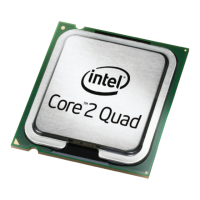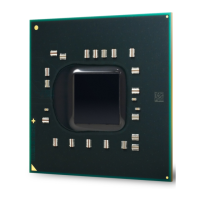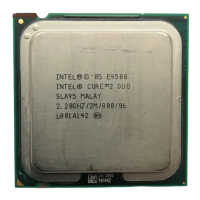Thermal Metrology
Thermal and Mechanical Design Guidelines 29
3.4 Processor Case Temperature Measurement
Guidelines
To ensure functionality and reliability, the processor is specified for proper operation
when T
C
is maintained at or below the thermal profile as listed in the datasheet. The
measurement location for T
C
is the geometric center of the IHS. Figure 2 shows the
location for T
C
measurement.
Special care is required when measuring T
C
to ensure an accurate temperature
measurement. Thermocouples are often used to measure T
C
. Before any temperature
measurements are made, the thermocouples must be calibrated, and the complete
measurement system must be routinely checked against known standards. When
measuring the temperature of a surface that is at a different temperature from the
surrounding local ambient air, errors could be introduced in the measurements. The
measurement errors could be caused by poor thermal contact between the junction of
the thermocouple and the surface of the integrated heat spreader, heat loss by
radiation, convection, by conduction through thermocouple leads, or by contact
between the thermocouple cement and the heatsink base.
Appendix D defines a reference procedure for attaching a thermocouple to the IHS of
a 775-Land LGA processor package for T
C
measurement. This procedure takes into
account the specific features of the 775-Land LGA package and of the LGA775 socket
for which it is intended.
§

